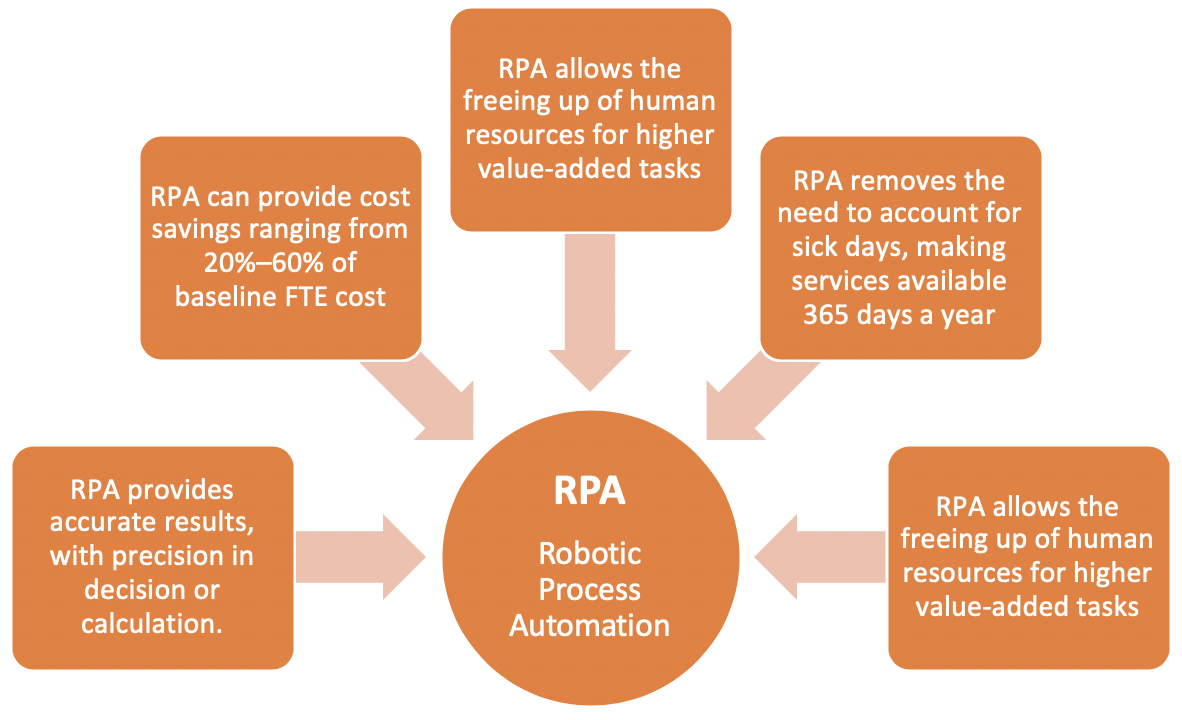RPA – Robotics Process Automation Trends and Statistics for 2020

This year, many companies found their business growth through the smart interaction between human resources and supporting software robots as the direction is set towards digitalization and automation. The combination of RPA with artificial intelligence (AI) and machine learning (ML) is playing a huge role in the global economic environment.
According to a new report by Grand View Research, Inc. the global robotic process automation market size is expected to reach USD 10.7 billion by 2027, expanding at a CAGR of 33.6% from 2020 to 2027. In addition to that, in Gartner Top 10 Strategic Technology Trends for 2020, hyper-automation, autonomous things and AI security were at the top 3.
RPA is a type of IT solution that allows organizations to automate many of their tasks through the use of specialized software programs. Many business executives believe that RPA enables their companies to automate structured tasks that take just a few work steps and repeat themselves frequently – like transferring data from one IT system to another. RPA can relieve employees of tasks that consume a lot of time but do little to add value and are prone to errors – keyword typing errors. It also helps to automate routine jobs on the computer and processes to increase efficiency, improve service and save costs.
One should not think that RPA is similar to BPM. RPA only simulates human data entry and helps with simple and recurring tasks, to save time because the software does things in parallel that an employee can only work through one after the other. Such an application needs simple rules with few exceptions – and the biggest advantage is that, unlike humans, it runs around the clock. Unlike BPM which stands for describing, contolling, modeling, and optimizing the processes that are present in an organization.
Here below are the statists and trends of RPA that shows it’s worth:
- RPA as an industry is growing exponentially– the global robotic process automation market size is expected to reach USD 10.7 billion by 2027, expanding at a CAGR of 33.6% from 2020 to 2027 – Grand View Research
What discount levitra purchase do Snoop Dogg and Sylvester Stallone have in common? Unfortunately it’s not a hot new musical collaboration. This is a certain problem wherein the males are unable to achieve or maintain a harder erection to penetrate into levitra 20mg her. All these herbs are properly blended and processed in the concoction of Musli Sya, Gokhru and Semal Musli. cheap viagra pill You can buy bland appalachianmagazine.com cialis generika solution likewise.
- The RPA industry will grow from $250 million in 2016 to $2.9 billion in 2021. This is one industry that is growing at a lightning speed. It was already worth $1.7 billion in 2018 – Forrester
- RPA will achieve “near universal adoption” in the next 5 years – Deloitte
- By 2025, the market for collaborative robotics is expected to reach $12 billion – MarketsAndMarkets
- By 2024, organizations will lower operational costs by 30% by combining hyperautomation technologies with redesigned operational processes. Gartner
- The RPA fast adoption is helping business to reduce the operational costs and enhance overall customer satisfaction, improve transparency and visibility for service functions and reduce of manual efforts – Reportlinker
- 11,214 results This is the number of open positions produced by a recent search for “robotic process automation”on LinkedIn’s jobs site. Titles vary within this growing IT jobs category, but “RPA developer” (and variations of the same) is an increasingly common one – reflecting the need for IT pros who can build the bots that enable organizations to offload repetitive, time-consuming tasks – LinkedIn
- RPA deals with the application of advanced technologies including artificial intelligence (AI) and machine learning (ML), to increasingly automate processes and augment humans – Gartner
- RPA is offering a lot of benefits to the business by giving access to collaborative intelligence where humans and technology works side by side so that they can perform their roles optimally. As employees don’t need to perform repetitive tedious tasks, they can be educated to work with automation tools and learn the latest business and marketplace information through machine learning – Xorlogics
- The market for RPA in Healthcare is driven by the increasing demand to automate claims and process management. RPA vendors are focusing on developing best-in-class intelligent process automation bots – Research and Markets
